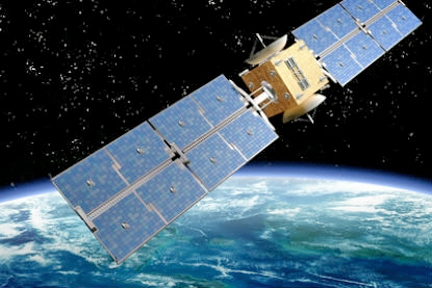[SatNews] Two defunct Soviet-era satellites will fall to Earth on Monday evening, according to U.S. space tracking data, Interfax reported.

Artistic rendition of Russia's Kosmos 903 satellite.
Neither of the satellites—an early warning missile detection satellite and a weather satellite—pose an immediate danger to residential areas. Both of the satellites are expected to burn up in the atmosphere over bodies of water, though some small fragments may survive reentry and reach the ground.Tracking data indicates that one of the satellites, an Oko type early-warning satellite designed to detect intercontinental ballistic missile launches, will enter the atmosphere above the Bering Strait—the Oko satellite is expected to burn up after crossing the 100 kilometer boundary that roughly marks the end of space and the beginning of the Earth's atmosphere. The Oko satellite, otherwise known as Kosmos-903—the name "Kosmos" is a uniform designation intended to conceal the nature of Soviet and Russian satellites from foreign eyes—was launched in 1977 from the Plesetsk cosmodrome aboard a Molniya rocket.
Kosmos-903 has long been defunct, but the Okos that Russia still maintains are falling into disrepair. In late June, Russia's space command lost contact with one of its three remaining active Oko early warning satellites, Kosmos-2479, significantly limiting Moscow's ability to detect missile launches. Russia's early warning network has suffered from neglect following the collapse of the Soviet Union, but defense and space officials have said that a new system is in the works, though details on the program are scarce.Kosmos-1151, the other satellite expected to fall to Earth on Monday, is an old test model of the Okean family of ocean observation satellites and will enter the atmosphere somewhere over the Kara Sea, located off the coast of Northern Siberia.

